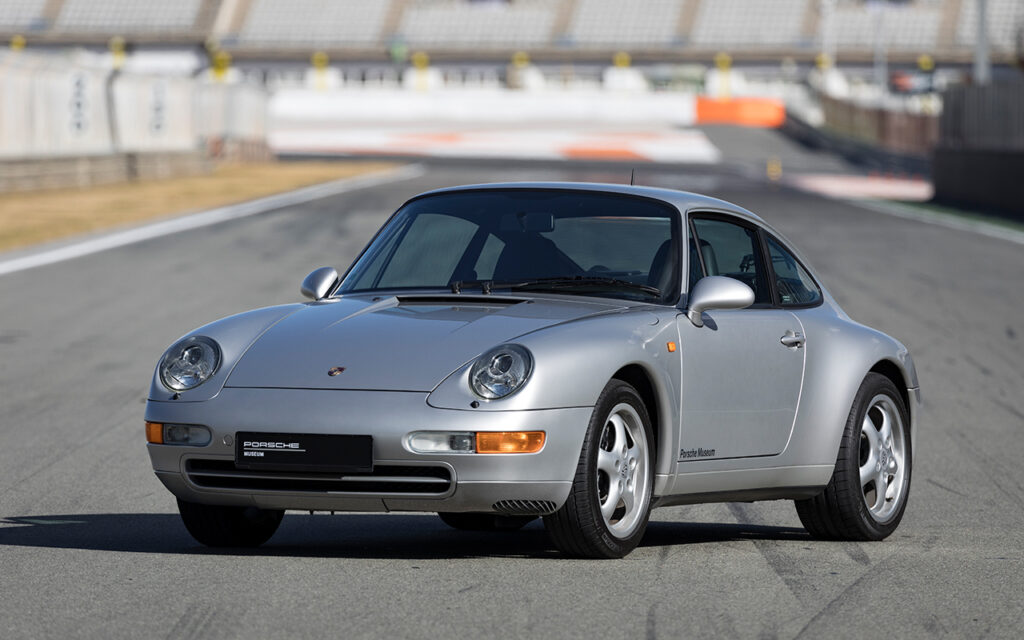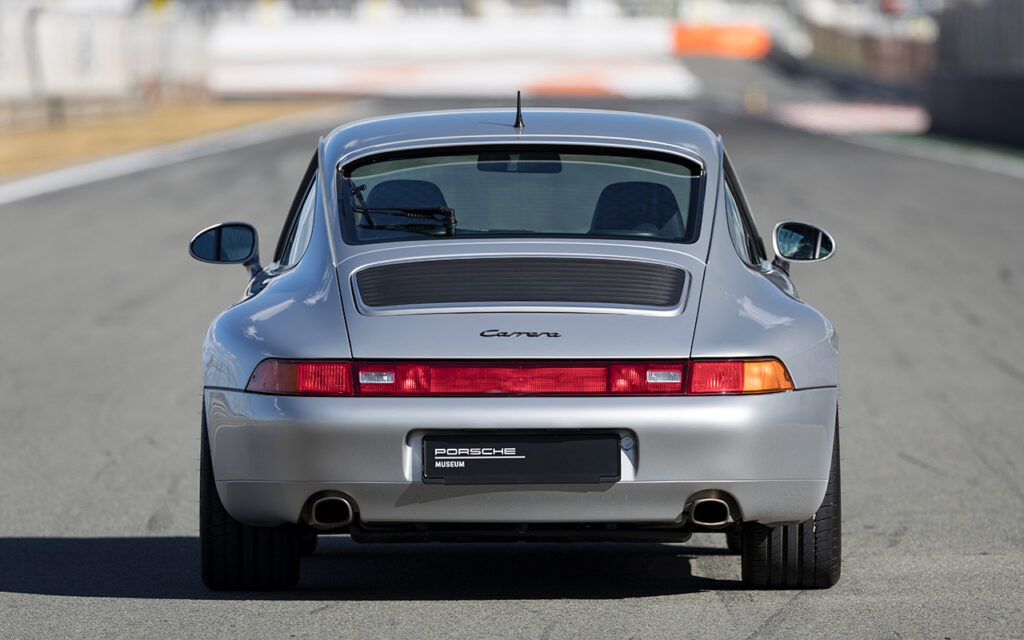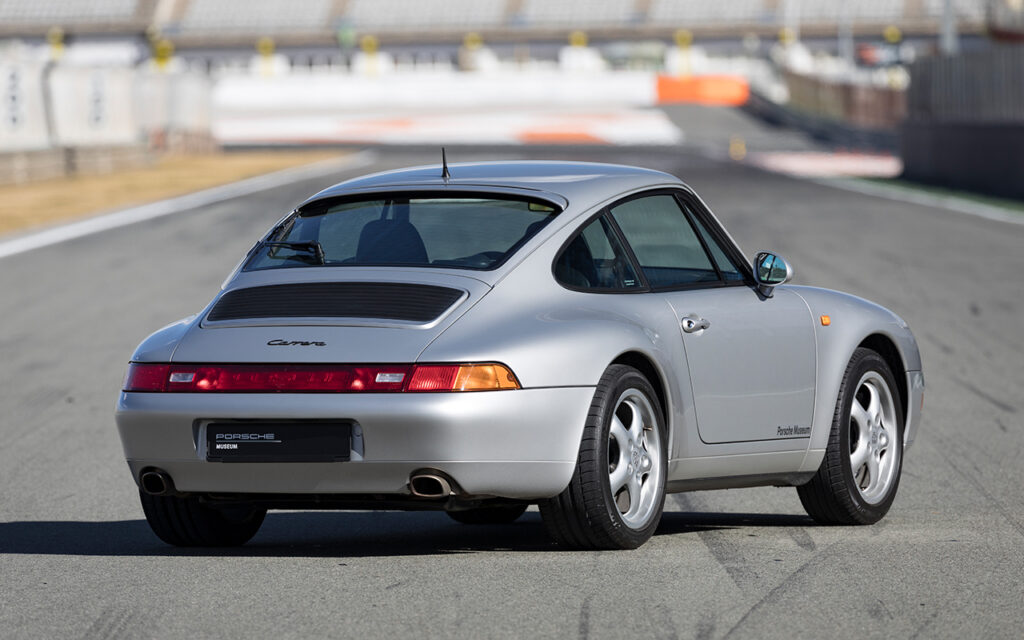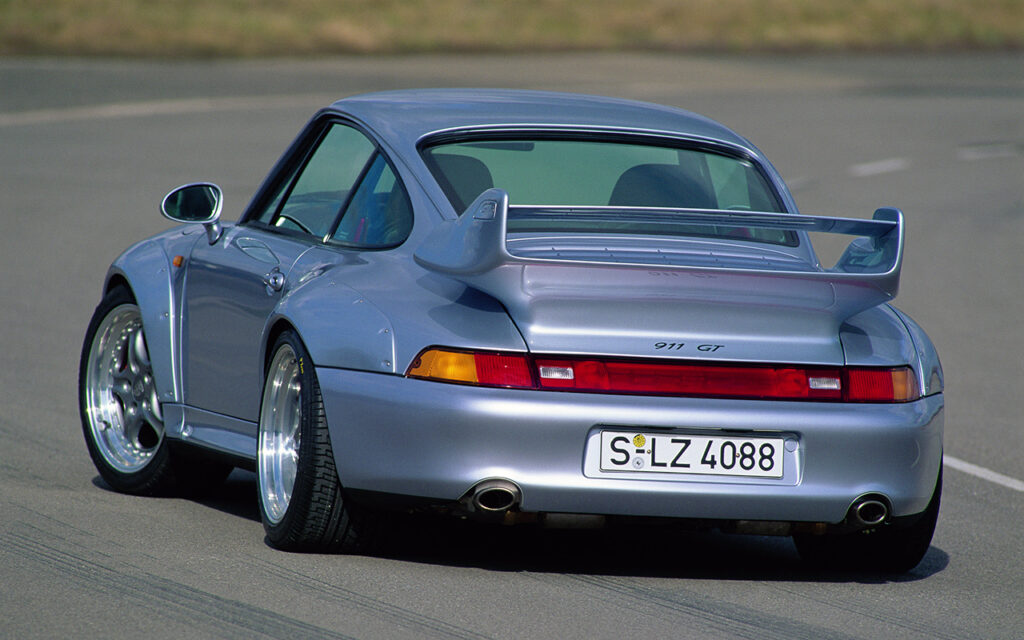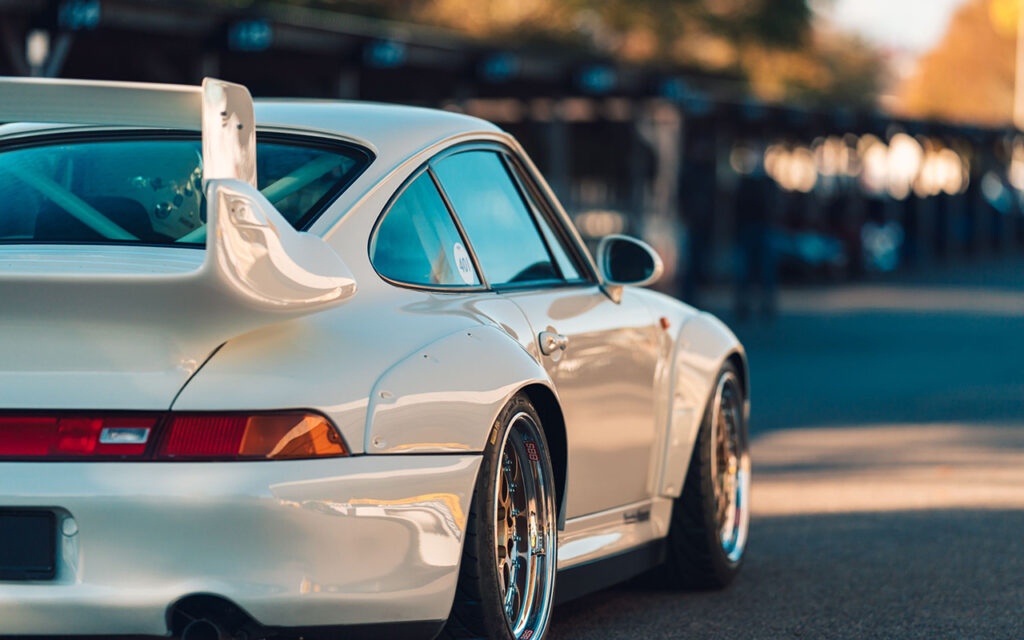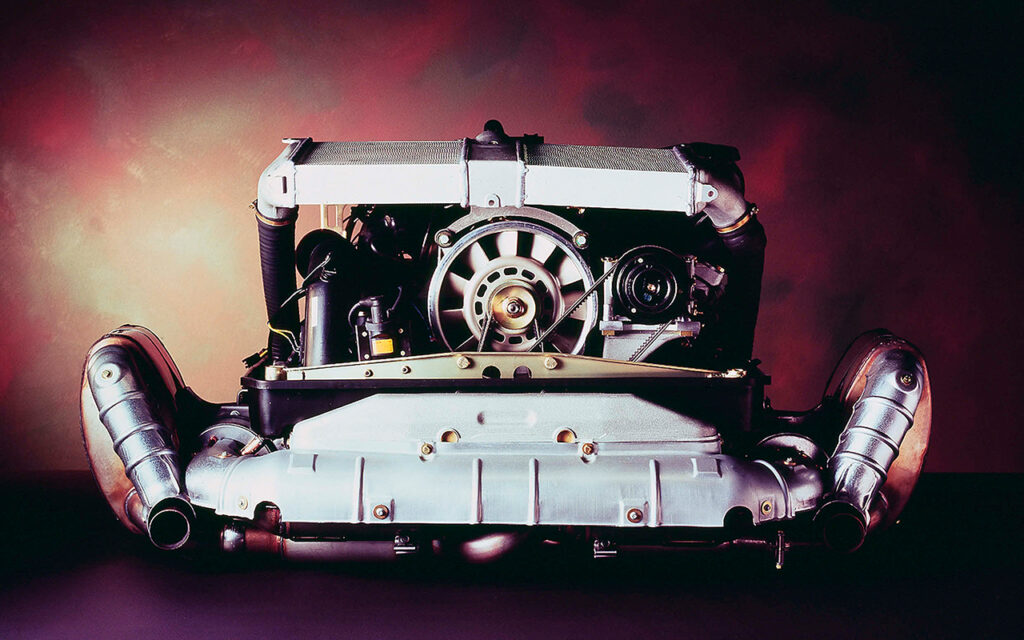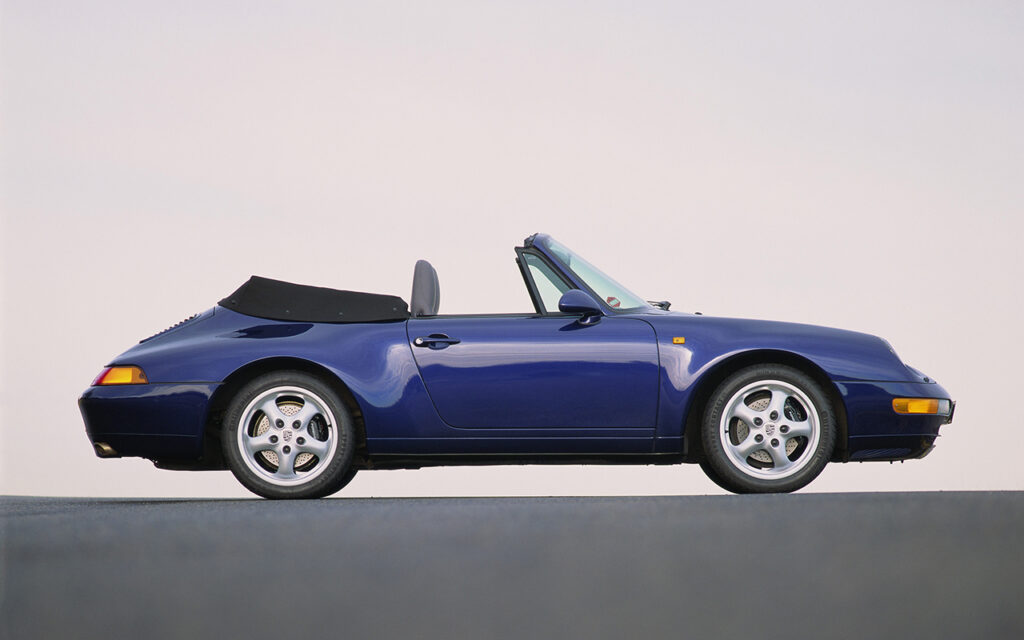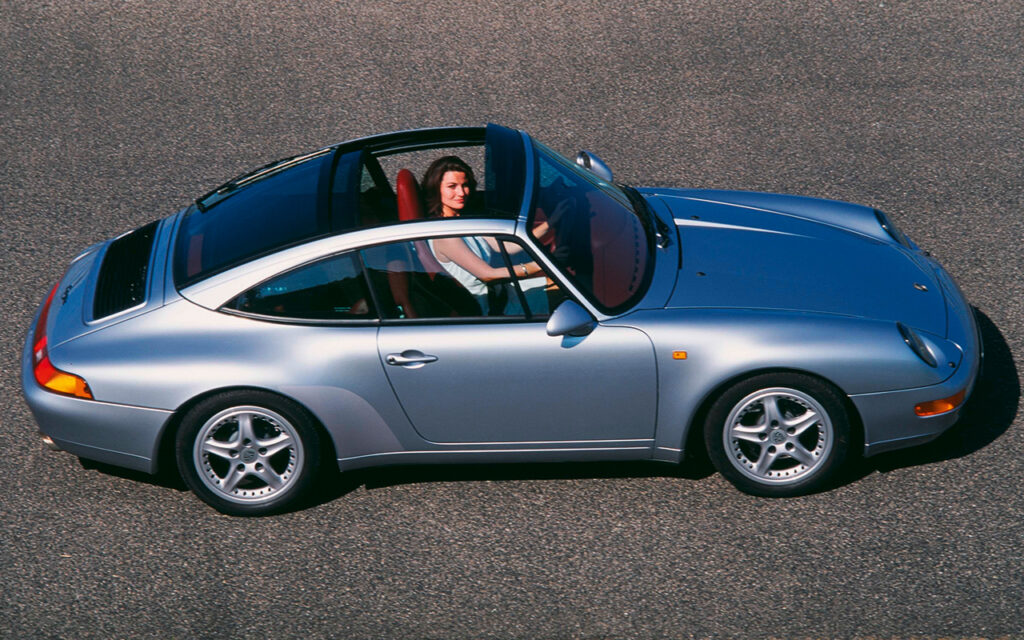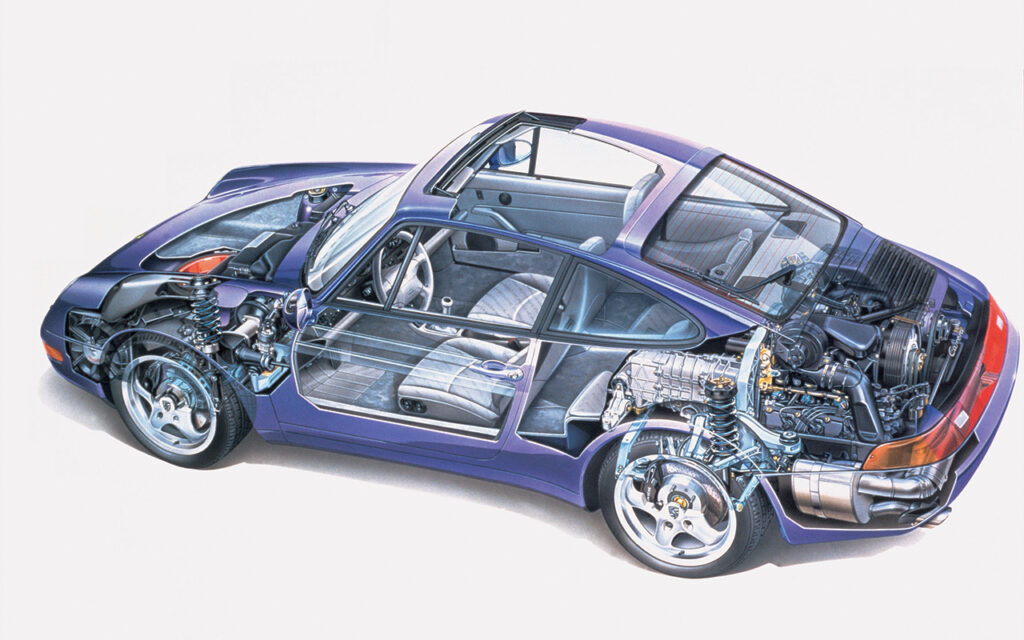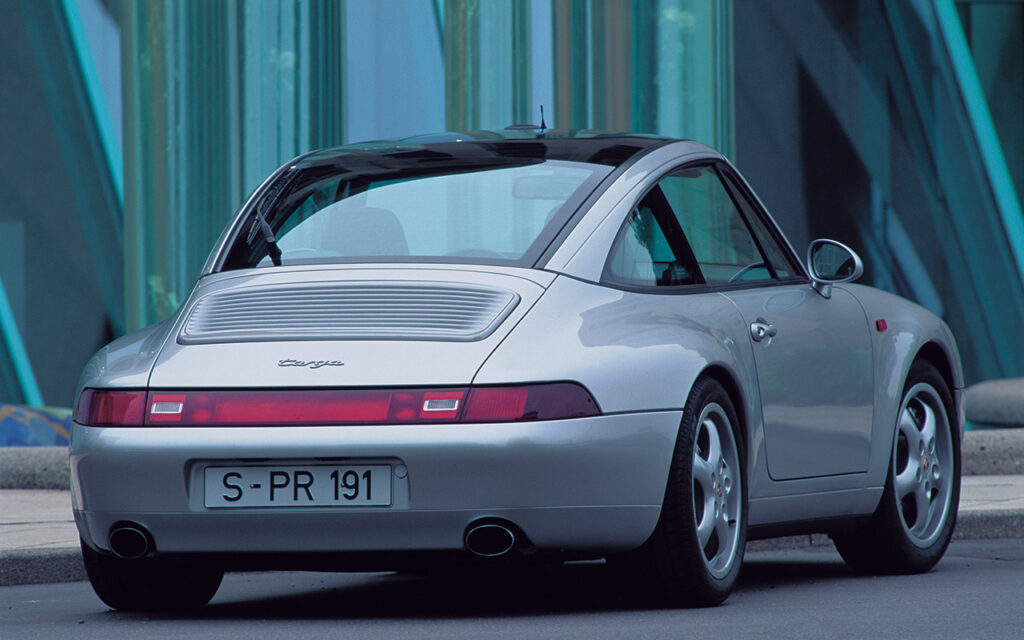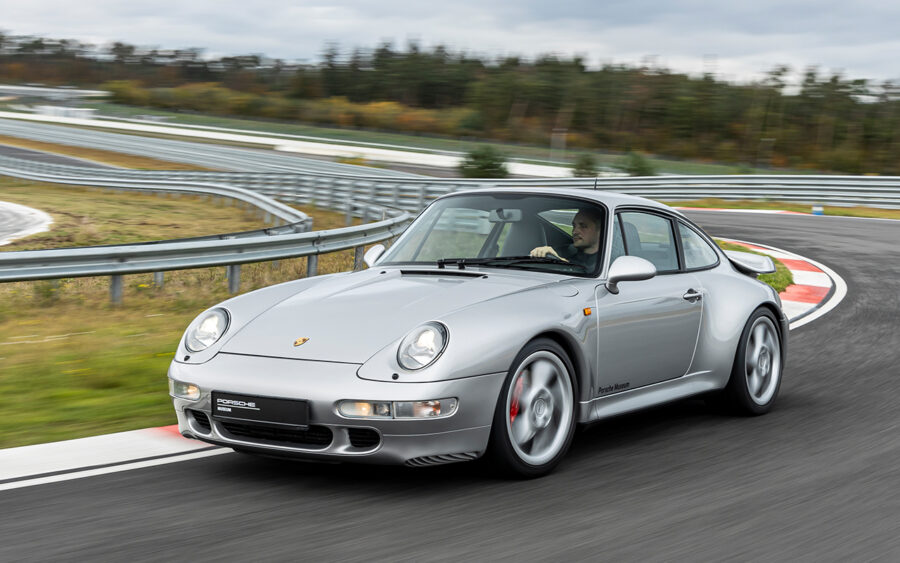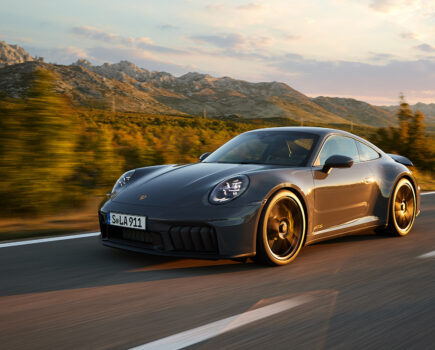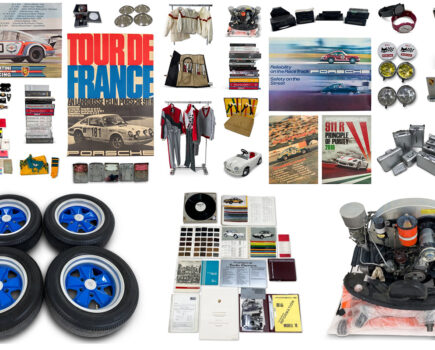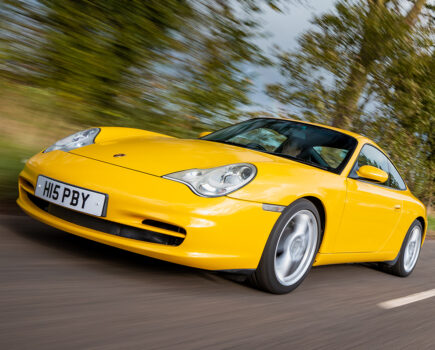The 993 was an air-cooled icon reborn for the mid-1990s – one which took the 911 as far away from the 964 as possible
Words: Jon Burgess
The 964 (also known as the K-N Series) had been a compromise, truth be told; Porsche’s income was diminishing, and sales of the transaxle cars (by then 928 and 968) had not bailed the 911 out. Caution had been the name of the game: even the Turbo, the flagship meant to lead where the rest followed, had to rely on an updated version of the 930’s M30 3.3-litre flat-six – and didn’t get the uprated 3.6 M64 until a year before the end of its life.
Granted, its limited editions (the RS variants in particular) were sought after and remain so today. The Carrera Cup kicked off a racing series still run in 2022 – but many in Porsche felt like the 964 Carrera 2 (C2) and Carrera 4 (C4) were aberrations. By 1993, a plan to put the mid-engined Boxster into production was well underway; two years earlier, painfully aware of how short of money it was, Porsche fell back on the notion of a volume seller that would shift enough units to keep the 911 for best. It had worked marvellously with the 914 of the 1970s; where the transaxle cars had failed to support and/or replace the 911, the Boxster would emphatically succeed in the former regard.
But the production Boxster (986), slated to share expensive componentry with the 996-generation 911, was still three years away; what the 964 left on the table the 993 was to take back, starting with its styling, which was felt owed too much to the classic 911s of old.
Porsche’s then-head of vehicle research and development, Ulrich Bez, wouldn’t have had it any other way. Both he and Style Porsche chief, Harm Lagaay, had parachuted into Weissach from BMW in 1989; together with designer, Tony Hatter, they were to transform the 911, slightly larger, wider and more powerful, an almost entirely new shell retained but the roof of the 964.
Gone were the near-vertical headlamps, replaced by steeply raked items. The carefully profiled bumpers of the old car were done away with entirely – now fully integrated, they and the rear wings curved to a greater extent. A bonded windscreen, smoother door handles, and a flusher fitting speed sensitive spoiler further updated the look of the 993 and made the car more slippery to boot.
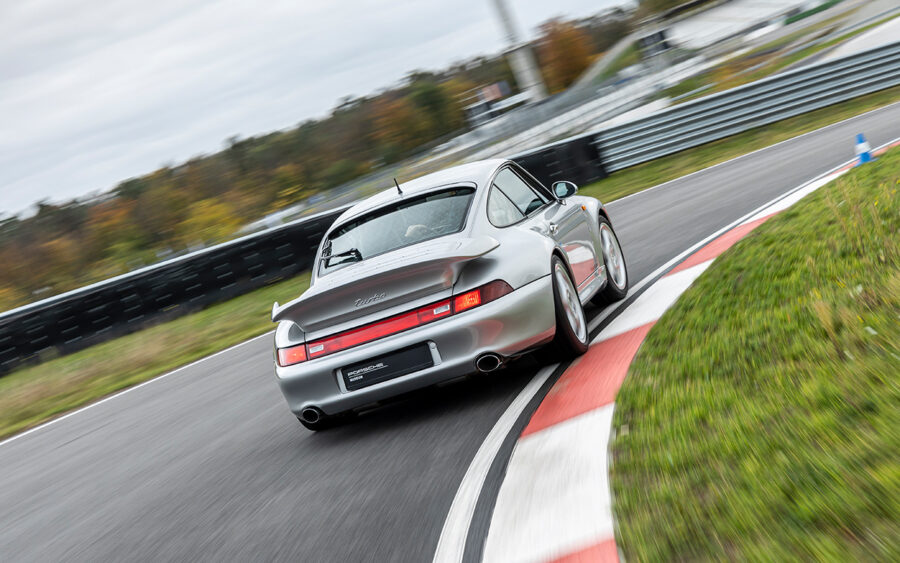
Another 964 bugbear was the rear suspension: mounted directly to the body and jury rigged in a hurry to cope with the demands of the C4’s driveline, it transmitted vibrations (and road noise) into the cabin to an unacceptable degree. Released a year late, the Carrera 3.2 and 930-based Speedster was barely a distraction; the 964 was a product of vicissitudes, and in some quarters it damn well showed. With things not quite so manic, the rear end was redesigned to a use a multilink suspension with Porsche’s so-called ‘Weissach’ geometry; crucially, it was also mounted on a subframe.
Better located, and better able to deter dive and squat, the 993 didn’t need all-wheel-drive to stay pointing in the right direction: jibes of agility being ‘engineered out’ of the 964 were put to rest there and then.
It would be remiss not to mention the 989 at this point: a front-engined, rear-wheel-drive saloon that was a pet project of Bez’s between 1989 and 1991, poised to replace the slow-selling 928. It ended up donating much of its aft suspension to the 993; its front end appeared on said fourth-generation 911, while the back three-quarter lived to fight another day on the 996.
Post-928 sales projections, and Bez’s departure sealed its fate but its sacrifice was a noble one. As the 944 was still selling in reasonable sums – and Porsche’s finances were decimated – it made more sense to cannibalise the 989 for its best parts, and facelift the 944 into the 968 for a far more reasonable sum.
With almost all the 964’s worst failings excised, matters then turned to the M64 3.6-litre engine. It was heavily reworked to the point of every part being new, according to Porsche: a stiffer crankshaft meant that lighter pistons and conrods could be used, retiring the torsional vibration damper the 964’s M64 needed to counteract harshness in operation.

The old ‘torpedo tube’ exhaust system was ousted in favour of a dual flow set up, and the flywheel and distributor were changed for less failure-prone equivalents. Power, as per requirements, was raised for the new car: in the 993, its ultimate evolution, output was raised to 272bhp with 243lb ft of torque, a healthy improvement on the outgoing naturally aspirated M64’s peaks of 250bhp and 229lb ft. The new M64 was slightly peakier than its ancestor, needing another 200rpm (to make its full twist).
Finally, that old stalwart, the G50 transaxle, in service since 1986 and incrementally upgraded for the 964, received a sixth ratio. The 993 consummated the good in the 964, and with its spectre fading from view, saw out the air-cooled 911 with panache.
Alas, time was eventually called on the air/oil-cooled M64: by 1998, noise and emissions regulations had overwhelmed it. Water-cooling of the heads was the answer: the chickens sent out during the 965’s era had finally come home to roost.
Timeline
1994
911 993 Carrera coupe launched (C2 designation dropped); 272bhp M64 (M64/05) engine with six-speed G50/21 transaxle or Tiptronic 50/04 clutchless manual or full-automatic gearbox, now called ‘Tiptronic S’.
911 Cabriolet follows in March.
Carrera 4 also debuts, with viscous-coupled all-wheel-drive system replacing the 953-derived mechanical centre differential; up to 40 per cent of the power could be sent to the front.
1995
Turbo released for the 1996 model year, with all-wheel-drive Carrera 4 (C4) drivetrain for the first time in 911 Turbo history. Wide body with widened wheel arches, fixed whale tail spoiler, 18-inch wheels, larger brakes and twin-turbocharged, 3.6-litre engine with 403bhp.
GT2 debuts – a gutted, 200kg lighter Turbo with two-wheel-drive, flared wheel arches and a massive fixed rear wing. Power up to 430-444bhp; an even wilder Clubsport variant (M003) was also made available in small numbers.
New RS (Rennsport) released for N/GT race homologation. Three variants released: RS (M001) racecar, RS (M002) road car and RS Clubsport (M003). The RS got VarioRam valve timing first – power up to 300bhp in the RS road cars. 18-inch wheels and Turbo brakes fitted.
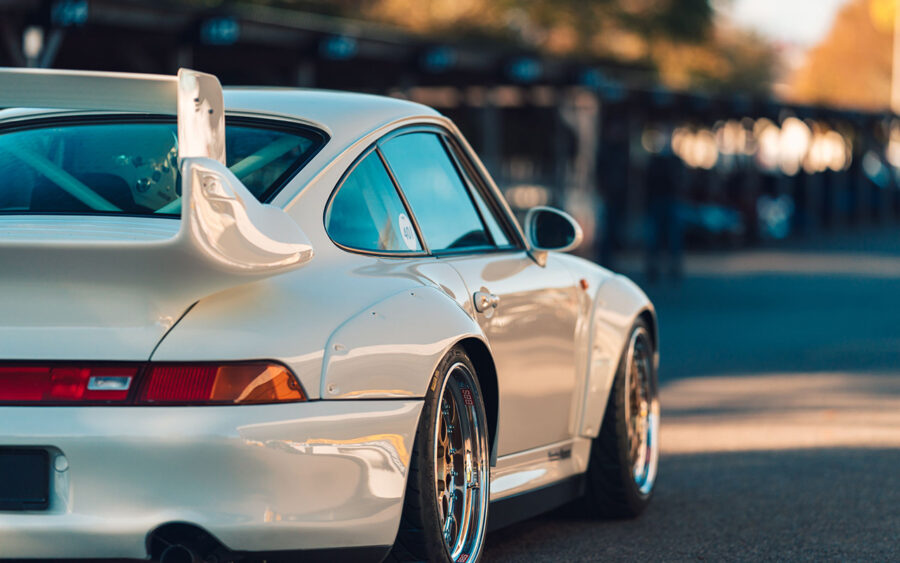
1996
911 Targa debuts with ‘greenhouse’ retractable roof which slid into the rear window, removing the problem of where to store the roof panel.
VarioRam now applied to Carrera and Carrera 4 ‘standard’ range. Power now up to 282bhp.
Carrera 2S (C2S) arrives. Uses wide Turbo body and wheels but keeps the C2’s improved-for-993 speed sensitive spoiler and 3.6-litre N/A engine. Identifiable by split vents on speed-sensitive spoiler.
Carrera 4S (C4S) also now available. C4S drivetrain in wider Turbo body but with Turbo brakes; both cars inspired by the 964 ’30 Jahre’ which used the Turbo shell with N/A running gear.
911 GT1 released in race and road versions; shares only the frontal chassis, plus the 993’s front and rear headlamps; built to compete the FIA GT1 category.
911 GT2 Evo arrives; 600bhp, GT2 category race car; 11 built.
1997
Carrera (C2) coupes and convertibles discontinued by the end of the year, along with C4 Coupe.
Turbo uprated with stronger gearbox input shafts and a programmable ECU.
Turbo S launched. New wing, larger, six-pot caliper brakes, different turbos and a freer-flowing exhaust take power up to 450bhp; 345 units built.
1998
Remaining 993 models (C4 cabriolet, C2S Coupe, C4S Coupe, Targa, Turbo, Turbo S) run down in favour of new 996 model.



